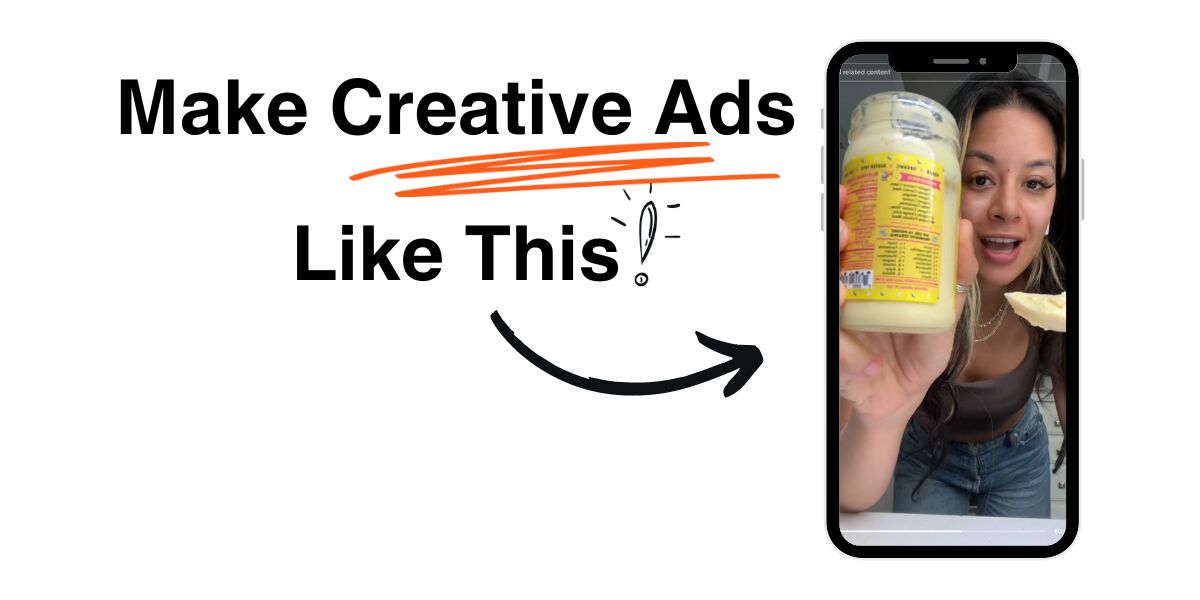In your last meeting, maybe your co-founder floated the idea that your business is finally ready to develop a marketing plan. And you’re tasked with creating it. *blink, blink*
The exact details of what constitutes a marketing plan may have become a little fuzzy since you were last introduced to the idea in college. Or perhaps you skipped that lecture altogether.
You may be mentally running through several different questions:
What should be included in a marketing plan? How do I gather the data needed to create a marketing plan? How should it be organized? Or maybe…what exactly is a marketing plan again?
In this article, you’ll gain answers to all that, and much more.
Developing a cogent marketing plan can position your team to achieve long-term business goals. As a resource, a marketing plan will inform every campaign, help to maintain your team’s focus, and ultimately ensure you have a set strategy for marketing instead of launching a bunch of disjointed, one-off tactics.
Hang tight—here’s how to write a marketing plan that will set you up for long-term success:
What Is a Marketing Plan?
A marketing plan is a precise outline of your marketing strategy, combined with facts and figures that help you stay on budget, understand your target audience, maintain consistent messaging, and achieve both long- and short-term goals.
It’s the roadmap that keeps you from being overly reactive in your marketing efforts.
Your marketing plan will play many roles for your business—reference guide, budgeting tool, and a means to distribute responsibilities across your team. Given that it will serve as a touchpoint for so many things in your business, your top priority when creating the document should be clarity.
When everything else is confusing, a marketing plan should be your guiding light forward.
Why Your Marketing Plan Matters
In the era of digital advertising and marketing, small businesses have a relatively low barrier to entry when it comes to getting their ideas and products in front of consumers. You don’t need much money to get started. Not to mention, the training you need to understand basic digital tools is often completely free online.
This low barrier to entry is great—until it’s not.
Easy and affordable campaigns have resulted in a lot of sloppy, directionless marketing. Without a clear roadmap, marketing efforts are based on whims instead of data and strategy.
It’s like your friend who volunteered to get inside one of those fan-powered Cash Cubes. They may snag an easy dollar now and then, but everyone watching knows your friend isn’t getting rich anytime soon.
The alternative is to create a comprehensive marketing plan that guides you toward specific goals. The team that takes initiative to develop a marketing plan will benefit from:
- long-term projections for growth;
- a specific, scalable budget for various marketing channels; and
- a clear mission.
Click Here To Get Free Instant Access To 28 More Proven Marketing Strategies For Startups!
What Should Be Included in a Marketing Plan?
Marketing plans vary a lot from business to business. However, most will maintain a few core attributes. If you haven’t already, go ahead and open a Google or Word doc.
Every good marketing plan starts with clear, comprehensive formatting. Each of the following sections should be headings in your document. The questions beneath each point are the topics each section will cover.
Marketing Plan Outline
-
Overview
- In summary: What does this document communicate?
-
Goals
- What do we want our marketing to achieve? (Examples: higher sales, greater customer retention, increased referrals, lower CAC, etc.)
-
Target audience
- What are the segmented demographics, behaviors, and psychographics of our target audience?
- What insights do we have about our customer base that could inform our campaign ideas and marketing efforts?
-
Marketing channels
- What marketing channels—blogs, social media, broadcast media, public relations, etc.—will help us reach our target audience?
-
Budget
- What is our annual marketing budget?
- What is our quarterly marketing budget?
- What percentage of each budget will be allocated to each marketing channel?
-
Messaging
- What are our guidelines for speaking to customers?
- (If you already have a brand style guide, this section may just reference key points about your brand’s voice, tone, and style.)
-
Tactics and techniques
- What techniques will we use per channel? (Examples: drip campaigns for email, influencers for Instagram, Facebook advertising for digital ad spend, bottom vs. top of funnel content for blogs, etc.)
-
Role distribution
- Who is in charge of maintaining certain elements of the marketing plan?
- Who keeps the budget?
- Who is in charge of newsletters, digital ads, etc.?
This is a general outline of everything you’ll need to include in your marketing plan. By including these sections, and clearly answering each question under the corresponding topic, you’ll have a good foundation.
As you start to fill out your version, scroll down to get more specific advice and tips for how to write a marketing plan.
Start with Internal Research
The best information for your marketing plan will come from inside your company: team meetings, market research, audience analytics data, whatever it takes to answer the questions mentioned under each section.
Create a Target (Goal Setting)
I know, I know: “Make more money!”
Maybe that’s the case, but your goal had better be clearer than that.
Creating a clear target requires taking a deep dive into your sales and marketing data. Find inefficiencies or bottlenecks in your sales pipeline. Are you having trouble attracting new clients? Do you lead a lot of people through the sales funnel, but lose them at the final call to action? Do most of your customers buy once and never return to your site again?
These problems can be painful to admit. But by admitting them, you can turn them into specific targets for your marketing strategy going forward.
Literally just flip these problems on their heads to create goals. A few examples:
- Increase customer loyalty by 20%
- Increase overall sales by 15%
- Increase email open rates to 18%
- Shift 30% digital ad spend to creating and optimizing organic content
You’ll have to find the numbers and metrics that meet your specific business needs. Take a hard look at the data, schedule a meeting with your team, and start creating clear business goals.
Use ‘PESO’ to Visualize Your Strategy
PESO (Paid, Earned, Shared, Owned) is an acronym that helps businesses break down their core marketing strategies into clear sections. This may be a good way for your team to visualize, not only what channels you’re using, but also how those channels play off of one another.
Here’s a quick rundown:
Paid: This includes every piece of content that requires ad spend for distribution. This could be a television ad, a Facebook ad, or an advertorial in a magazine.
Earned: Instead of paying for features in big magazines or television stations, earned media involves guest blogging, free publicity, and even viral content like videos on social media when they’re picked up by larger outlets.
Shared: Here is where websites like Facebook and Instagram come into play. Shared (also called social) media describes any free external distribution channel. These channels are often used for various forms of content marketing.
Owned: This part of your media strategy involves websites and tools that actually belong to your company. This could be an email list, your website, or a blog.
For best practices, try to implement a mix of all four marketing techniques. Siloing your business into one or two marketing streams can put you at terrible risk. Algorithms can change in a day, causing perfect sales funnels to dry up in a matter of minutes. Take it from Mike Farah, CEO of Funny or Die.
Following a series of heavy layoffs after Facebook tweaked its algorithm in 2018, Farah took to Twitter: “Mark Zuckerberg just walked into Funny or Die and laid off all my friends.”
Diversifying your marketing efforts begins in your marketing plan. Avoid being too dependent on any one channel.
Determine Your Marketing Platforms
This goes hand-in-hand with the section above. The digital marketing revolution has made it literally impossible to represent your business on every platform and every tool. You must be selective about how and where you market your business.
Don’t spread your marketing efforts too thin. Good strategy involves focus and intention. As renowned strategist Richard Rumelt says in Good Strategy, Bad Strategy, “Good strategy works by focusing energy and resources on one, or very few, pivotal objectives whose accomplishments will lead to a cascade of favorable outcomes.”
How do you determine where to focus?
Consider where your customers invest their time and attention. Are they Reddit users? Do they attend networking events? Which newsletters do they subscribe to? Answering these questions will help you determine the optimal platforms to use for your marketing.
Decide How to Measure Success
Measuring marketing success can be challenging, especially as you add more channels. Fortunately, most popular marketing software tools provide great analytics. Here are just a few:
- SEO tools: SEMrush, Moz, and Ahrefs
- Digital advertising analytics tools: Facebook Ads Manager, Twitter Ads Manager, LinkedIn Campaign Manager, you get the picture
- Website analytics: Google Analytics (it’s free, so you have no excuse not to be using this)
- HubSpot CRM (also free)
- Email marketing: Mailchimp, ActiveCampaign, and Constant Contact
How to Handle the Actual Writing
As a copywriter, my whole business exists on the premise that people don’t have the time or willingness to write. I know writing can be an absolute pain for many business owners and marketing teams.
If that’s you, there are secrets to minimizing the pain and maximizing the quality of your final marketing plan.
Begin with an outline (like the one included above). As you write, don’t try to be too sophisticated. Just use plain language. Clarity and brevity are your two biggest writing goals.
A few additional pointers:
- Write to an 8th grade reading level, using simple words and short sentences).
- Use graphics to help explain complex ideas, statistical breakdowns, and projections.
- If you’re finding it challenging to write simply, try composing that section as an email draft—explain the concept like you would if you were emailing it to a friend.
- Use clear headings and subheadings.
- Write in active, as opposed to passive voice. Sentences should start with the subject, then an active verb, then an object. Active: She crafted the marketing plan. Passive: The marketing plan was crafted by her.
Writing the Overview
One of the most challenging things to write will likely be the overview section. Creating a summary can feel daunting, because you have to make some decisions about where you want to focus.
Ideally, an overview should enable your co-founder, investors, and team to quickly grasp the most important elements of your plan. They should see enough to rest assured that the finer details are given due attention. So how do you convey that in just a paragraph or two?
First, the overview should be the final thing you write. As the synopsis, it’s impossible to convey the right information until the rest of the document is complete, with every number, figure, and strategy in its proper place.
From there, determine some power words.
Power words are the highly specific terms, phrases, and numbers that say the most about your plan, using the fewest words. Tied together, these power words paint a big picture of your overarching strategy.
The way you turn specific terms into a big-picture overview is by connecting the dots of each point. Think of it as telling a logical story about how each power word supports or adds to the one used before it.
Let’s consider an example. Our made-up business will be called Big Deal Business. I’ve put the power words in bold. The language between the power words forms the elements of storytelling that connect one point to another, forming the larger narrative:
Big Deal Business will use a blend of paid, earned, shared, and owned media to achieve specific measurable goals within the next 12 months. These goals include increasing email open rates to 18%, increasing customer retention by 20%, and improving overall sales by 15%. Big Deal Business has implemented HubSpot CRM and Mailchimp accounts to track our progress. To achieve these goals, Big Deal Business will allocate $10,000 toward marketing per quarter.
Click Here To Get Free Instant Access To 28 More Proven Marketing Strategies For Startups!
Revise Using New Data
Marketing plans have expiration dates. As you create your marketing plan, determine a specific date for your team to reconvene to discuss your overall goals and individual tactics.
That timeframe should give your team enough time to sufficiently apply its marketing techniques and begin seeing some longer-term results. Some businesses may choose to meet up every four to six months, while others may choose to revise annually.
Either way, you want to give your team enough time to gather sufficient data. This will help you know what’s working versus what’s falling short of expectations. Use the 80/20 rule to double down on the marketing techniques that drive the best growth and nudge you closest to your goals.
Marketing plans get better through iteration, refined focus, and testing.
What techniques are you using to develop your marketing plan? Post a comment below, and I’ll reply directly with any feedback or advice I have. Let’s talk.

















